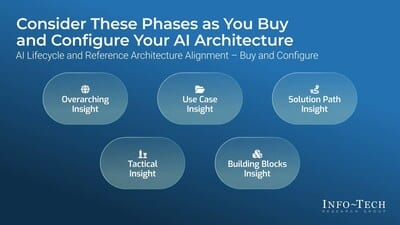Scaling artificial intelligence across organizations is fraught with challenges. Despite rapid advancements, many AI initiatives fail to deliver sustained business value. Recent research from Info-Tech Research Group sheds new light on why AI efforts fall short, and what CIOs can do to build scalable, sustainable AI architecture.
Common Pitfalls Hindering Scalable AI Architecture in Enterprises
According to Info-Tech’s findings, AI scalability is often undermined by fragmented architectures, inconsistent technology choices, and governance gaps. These issues create barriers that slow down or even stall AI projects. Many IT leaders feel compelled to jump on new technology trends without fully assessing their impact on existing data and security systems. As a result, some organizations face costly rework or witness disappointing project outcomes.
Info-Tech’s Actionable Framework for Sustainable AI Platforms
To overcome these obstacles, Info-Tech introduces a detailed framework for designing AI systems. This blueprint emphasizes a component-based approach that combines flexibility, interoperability, and alignment with business goals. The guidance includes step-by-step instructions, decision tools, and templates. With these resources, IT leaders can accelerate implementation, manage risks, and support well-informed choices throughout the AI deployment lifecycle.
Five Key Insights CIOs Need for Successful AI Architecture
Info-Tech highlights five core insights to help CIOs and IT leaders create robust AI platforms:
- Standardize components: Build on predefined building blocks for flexible, future-ready platforms.
- Focus on business value: Ensure AI use cases deliver measurable outcomes before full deployment.
- Clarify solution paths early: Decide whether to buy, build, or extend to manage complexity.
- Map foundational elements: Connect components to maintain architectural integrity and avoid missteps.
- Adopt phased delivery: Use strict model version control and metrics to track progress and ensure maintainability.
These steps equip enterprise teams with the clarity, flexibility, and responsibility needed for long-term success.
In summary, AI architecture must be well-structured and adaptable for organizations to remain competitive and innovative. Info-Tech’s research offers actionable steps for IT leaders to build AI systems that are not only scalable but also sustainable, ensuring their efforts deliver real, lasting value.
Don’t miss our latest Startup News: GosuBattles Grant Programme Boosts Grassroots Esports in Asia
